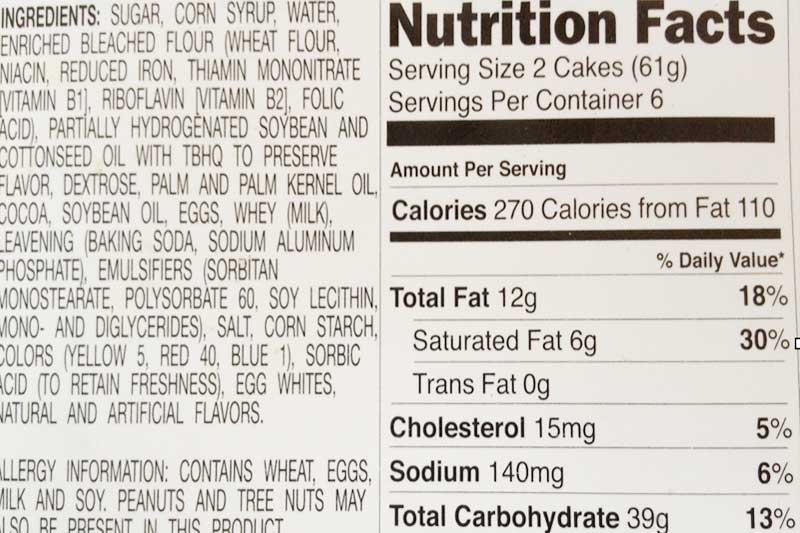Have you ever read the label on a food item and asked yourself – what do these numbers mean? Is this item healthy? What are they saying is in it? What are these names, are they food or chemicals? I know when I first started watching what I eat, I didn’t’ understand what I was reading, and you may not either. So, let’s go over some basics about labels.
Look at the list of ingredients – if there are more than 5 ingredients listed and if any of them are words you don’t understand or can’t pronounce, then it isn’t a healthy food item no matter what the box says on the front. More than likely it’s not even real food and has no real nutritional value whatsoever. Also, beware of high fructose corn syrup or preservatives; these can really throw your weight loss plans or healthy eating efforts to the dogs.
Check out the fat grams – A good rule of thumb is to stay under 5 grams of fat, unless the item is a healthy fat such as olive oil, coconut oil, avocado oil or nuts.
What about fiber – We should be consuming a minimum of 25 grams of fiber daily. Make sure the item you’re checking out has at least 5 grams of fiber. Fiber helps the food to break down slower in the body and keeps you feeling fuller longer.
Carbohydrates – Now this one is a little complicated. Make sure the net carbs are less than 10 grams. Net carbs = total carbs minus the dietary fiber-sugar alcohols. Carbohydrates are important because too many carbs cause your blood sugar to increase, which in turn can cause your body to increase your fat. Also, make sure that your sugar grams are less than 5 grams. Beware of added sugars – some food items may have added sugars even though the food is naturally sweet. These added sugars are put in to make the item sweeter and to potentially get you addicted to sugar (food manufacturers do this so you keep buying their products).
Protein – Make sure the item you’re looking at has at least 5 grams of protein. Actually you should consume 15-20 grams of protein each meal at a minimum. As a general rule women should consume 4-6 ounces each meal and men 6-8 ounces each meal.
Cholesterol – What you really have to pay attention to when it comes to cholesterol is not the cholesterol in the item you are looking at, but how much sugar is in the item. Sugar, or fructose to be more precise, will fill your liver’s quota quickly and the liver is what controls the cholesterol in your body. Dietary cholesterol, or what is in the food, has no impact on the cholesterol levels in our body.
Sodium – Unless you’re on a salt restricted diet, salt is not your enemy. Your body needs salt or sodium to maintain a healthy balance within your body. Beware of the sodium content in the food you’re looking at – high sodium foods can cause fluid retention, kidney disease, high blood pressure or stroke. Many processed foods are very high in sodium, so always check sodium content before purchasing the item.
Calories – In reality, these are not important in the grand scheme of things. What really need to be counted are micronutrients – fat, carbs, and protein. The only food items with calories you need to worry about are those that have labels on them. If you’re eating veggies, fruits, chicken, beef, fish, eggs and healthy fats – calories don’t matter as much as when they’re sugary, processed, packaged food items.
1 – Really bad ingredients
2 – more than 5 grams fat
3 – low on fiber 4 – high in carbs and sugar 5 – low protein
This would obviously be a poor food choice – remember to check the labels before you buy what you are putting in your body.
This is a quick glance at food labels – keep in mind that fast foods don’t come with ingredient labels you can easily read, but all processed foods have labels you need to pay close attention to before purchasing and feeding them to your families. These are the foods you need to be careful not to make them the major portion of your family’s diet. Processed foods are the ones that cause health problems, weight problems, lack of energy problems and they’re the ones that lack any real nutrition – because they’re not real food!
A healthy diet is one that consists of fresh fruits and veggies, as well as meat and eggs that haven’t been processed and healthy fats such as olive oil, coconut oil, grass fed butter, nuts and seeds.
As always, feel free to contact me if you have any questions or comments. I’m here to help in any way I can.

